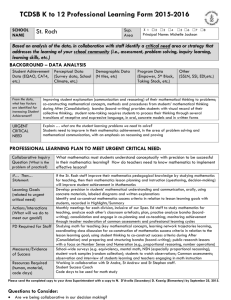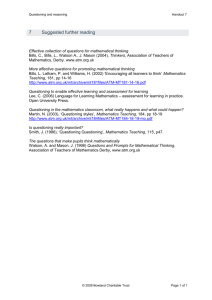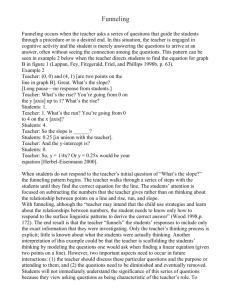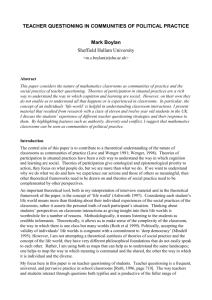A Balanced Mathematics Program
advertisement
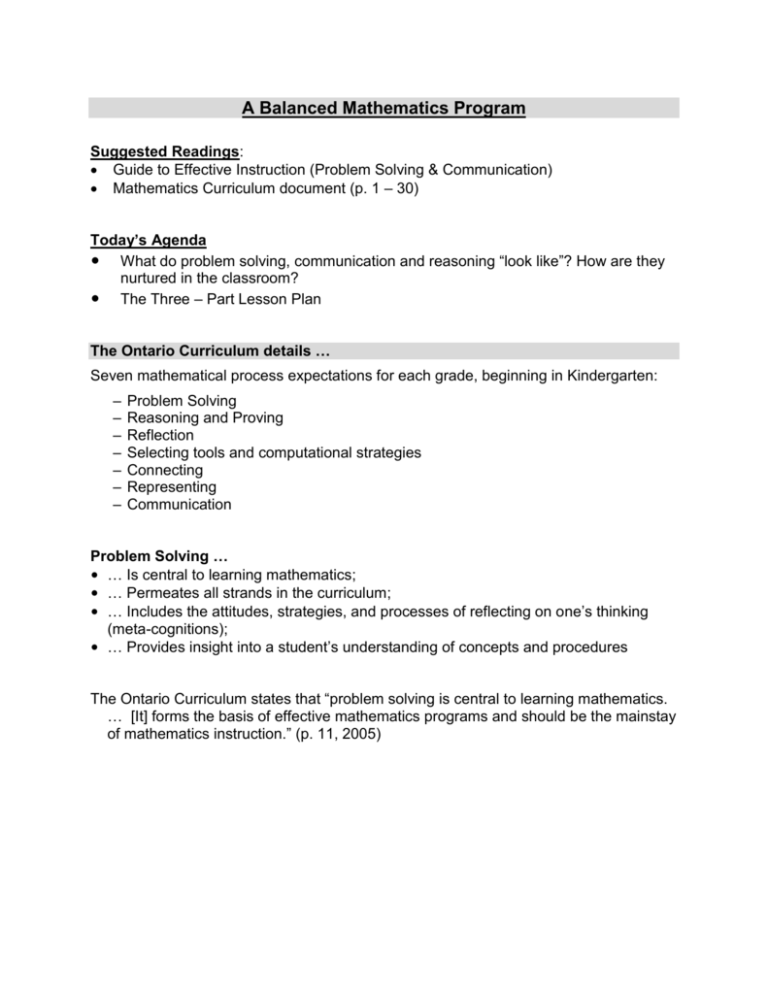
A Balanced Mathematics Program Suggested Readings: Guide to Effective Instruction (Problem Solving & Communication) Mathematics Curriculum document (p. 1 – 30) Today’s Agenda • What do problem solving, communication and reasoning “look like”? How are they nurtured in the classroom? • The Three – Part Lesson Plan The Ontario Curriculum details … Seven mathematical process expectations for each grade, beginning in Kindergarten: – – – – – – – Problem Solving Reasoning and Proving Reflection Selecting tools and computational strategies Connecting Representing Communication Problem Solving … • … Is central to learning mathematics; • … Permeates all strands in the curriculum; • … Includes the attitudes, strategies, and processes of reflecting on one’s thinking (meta-cognitions); • … Provides insight into a student’s understanding of concepts and procedures The Ontario Curriculum states that “problem solving is central to learning mathematics. … [It] forms the basis of effective mathematics programs and should be the mainstay of mathematics instruction.” (p. 11, 2005) Teaching through Problem Solving Getting Started (preparing for learning) The teacher engages all students as they explore a new mathematical concept in a familiar context. • The teacher presents the problem and any pertinent information needed to solve the problem. • Initial instructions for completion of the task are clearly outlined. • Before the students are sent off to work, the teacher checks to ensure that they understand the problem. Working on It (facilitating learning) • providing situations in which students try their own strategies; • offering guidance and redirection through questioning; • providing assistance to those who require it, and allowing the other students to solve the problem independently. Reflecting and Connecting (reflecting, extending, and consolidating learning) • The teacher leads the discussion. • Students share their strategies and consider different solutions to the problem. • Time is allocated for sharing several examples. • The discussion validates the various strategies used, and consolidates learning for students. The discussion, questioning, and sharing that occur allow students to make connections with their own thinking and to internalize a deeper understanding of mathematical concepts. Principles of Effective Mathematics Instruction • • • • Respect how each student learns by considering learning styles Provide a culture and climate for learning Recognize the importance of meta-cognition Focus on the significant mathematical concepts (“Big Ideas”). An Effective Mathematics Program, balances… • Conceptual and procedural understanding • Investigations and practice (but, not endless worksheets) • Lesson types (e.g., games, problem-solving tasks, inquiry activities) • Groupings (e.g., individual, pairs, small group, whole group) • Assessment strategies (e.g., observation, conference, paper and pencil) • A variety of instructional approaches








